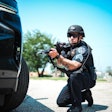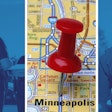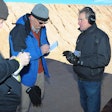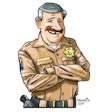 Photo: iStockphoto.com
Photo: iStockphoto.com
"Domestic _____"
On the old TV game show "The Match Game," it was up to a contestant to fill in that blank. Odds are pretty good that they might have picked a word like "bliss," or "partnership." However, if the contestant was a veteran cop, those odds would probably change considerably. For then, as now, "violence" might well be the first thing to come to his or her experienced mind.
It was the prospect for violence that found Volusia County, Fla., Dep. John Braman pulling up short of a single-story house in Deltona on the morning of Nov. 26, 2011. He'd driven there in the hopes of finding Corey Reynolds.
Earlier that morning in nearby DeBary, Reynolds had thrown his 24-year-old girlfriend to the ground and attempted to strangle her. Fellow Volusia County deputies were still in the process of taking the domestic violence report when Braman put the car in park and began a vigil on the Reynolds' residence. It wasn't until his backup deputy, John Brady, arrived three minutes later that Braman stepped out of his patrol unit. The two deputies made their way up the sloped driveway to the front door of the house.
Their knock was answered by a woman who identified herself as Corey Reynolds' mother. She told the deputies that she wasn't sure if he was at home, then ducked back inside the house to look for him. Returning to the door, she said that she couldn't find him.
Dep. Braman asked who owned the truck parked in the driveway.
"It's mine," she said. "But I haven't driven it today."
"The hood's warm," the deputy commented.
Going Hands-On
With Brady providing flanking cover, Braman met Reynolds at the front door.
At first glance, Reynolds didn't appear to be an immediate threat. The relative cool of the morning more than justified the jacket he was wearing and there wasn't anything to suggest that he was armed. But when Braman attempted to get Reynolds to step away from the door, the man bristled.
Everything about Reynolds' demeanor communicated a determination not to go along with any program the deputies had to offer. Brady recognized as much, and when Braman nodded an acknowledgment to him that it was time to go hands on, he was ready.
"Turn around and put your hands behind your back," Braman ordered, as he reached out for Reynolds' arm.
Instead, Reynolds attempted to spin on the deputies and retreat inside the house. Braman made a tactical decision to engage him then and there on the doorstep, grabbing Reynolds by the shoulders and throwing him to the ground.
Reynolds attempted to strike at the deputies. Brady countered with knee strikes to the man's side in an effort to incapacitate him.
Then it happened.[PAGEBREAK]
Get the Gun!
Neither deputy saw the .40 caliber semi-automatic pistol until Reynolds started firing rounds from it. Where he'd accessed the gun was a mystery. What wasn't in question-at least in Braman's mind-were the man's intentions.
A blast went off near Braman's head, rupturing his eardrum and heralding a high-pitched whine. Braman's hand shot up and seized Reynolds' forearm in a bid to keep the barrel of the pistol from being pointed at his head. A split-second later two more shots rang out. Bullets tore into Braman's arm and shoulder, but Braman stayed in the fight.
AUDIO: Listen to radio dispatch traffic.
For his part, Brady was still playing catch-up. He still hadn't seen the gun in Reynolds' hand, and the presence of the man's mother in the doorway only further confused the matter. A bullet whizzed past his disoriented head.
Where the hell are the rounds coming from? Reynolds' mother? What would that have felt like if it'd hit me in the head?
Brady allowed himself a split-second prayer and his synapses kicked into high gear, compensating for his initial confusion and allowing him to zero in on the threat over which Reynolds and Braman wrestled.
Braman lay atop Reynolds, using what remaining strength he had in his wounded left arm to pin the suspect's hand to the ground. Stacking his right hand atop his left and using both to pin down the shooter's hand still gripping the pistol, Braman yelled.
"GET THE GUN! GET THE GUN!!"
Brady seized the firearm, sweeping it from Reynolds' grasp.
With the gun secured, Reynolds' resistance was easily overcome. The deputies handcuffed him. Only then did Brady realize that he, too, had been struck.
Analysis and Recovery
"I honestly didn't think that John (Dep. Braman) had made it through the first volley of shots," says Brady. "When I heard John's voice, that was a good sound. That was a sweet sound."
For a brief moment, Braman didn't realize he was being shot at. To him, the initial discharge of the gun sounded like a TASER deployment, followed quickly by a muting sensation. "We almost didn't recognize what it was at first," he recalled. "It was just that quick and that unexpected."
Each deputy is thankful for the presence of the other, and that neither went in alone.
"It wasn't an in-progress disturbance that we were responding to," says Braman. "But the way we're trained, if you're going to make an arrest, you don't go by yourself. Just by training and habit and the way we do things and our policies, we're going to treat it like an in-progress emergency. We're going to have a two-person response, at minimum. That's how we respond."
Braman says that even though he had a clear view of the subject's hands and saw no indication that the man had a weapon, something alarmed him about the confrontation. "I knew something was going to go wrong," Braman says. He points to Reynolds' stance and his refusal to move away from the front door as two indicators that set off his instinctual warning flags.
It was also those very same instincts-honed and reinforced by repetitive, scenario-based training and experience in the field-that helped the two deputies survive the hail of gunfire. While they never saw the gun until after the suspect started squeezing off the rounds that triggered the life-and-death struggle, Brady and Braman had responded to the call with a plan. After all, both deputies had trained extensively and had responded to back up one another on numerous attempt-to-contact calls in the past. It's just that they never had one turn this deadly before.
If not for their training, instincts, and quick, tactical thinking under fire, there's little doubt that the Sheriff's Office would have been burying one or both officers. Instead, despite being struck by bullets, the deputies managed to subdue, disarm, and handcuff the shooter without having to return fire.
By Brady's estimate, the shooting happened in a matter of five to eight seconds. When it was over, the rest of the field force, along with paramedics, rushed to the scene. Braman was airlifted to a hospital in Daytona Beach for treatment. He spent the night there and was released the next day. Brady was taken by ambulance to the same hospital, where he was treated and released.[PAGEBREAK]
The 27-year-old Reynolds, meanwhile, remains in jail, held without bond while awaiting trial on two counts of attempted murder of a law enforcement officer and one count of battery against his ex-girlfriend.
Back on Duty
Looking back at the shooting, every single detail from the incident remains crystal clear in the deputies' minds.
"Everything was very clear," Braman says. "I remember everything in a 10-foot circle around me. I remember who was there. I remember what was said. I remember Brady's radio transmission."
For his part, Brady was astonished at how clearly and rapidly his thought processes worked. "It happened so quickly," he says. "I can't believe I had that many thoughts at one time."
The one question the deputies get asked most about the incident is why didn't they return fire instead of wrestling the shooter to the ground.
Braman answers that it was a matter of split-second prioritization-he instinctively knew that he needed to stay on top of the suspect to have any chance of survival. Had he created space between himself and the suspect and disengaged to draw his weapon with his right hand, he figures the shooter would have easily overpowered his weakened left arm and been able to come up shooting again. "I told myself, 'If he comes off there, you're gonna die. You cannot let him get that gun off the ground,'" Braman explains.
Brady's answer is equally well-reasoned. While he had a clear shot at the suspect, at no time was Dep. Braman also not in the line of fire.
"I had my gun out and was prepared to shoot," says Brady. "But we're trained to know what our target is and what lies behind it. My main concern was for Dep. Braman."
In hindsight, had they shot the suspect, no one would have questioned their justification. But Braman is more than content that they didn't have to. "It almost makes you feel a little better about yourself," he says. "We still got the bad guy, we still put him in jail, and we both got to go home."
Both deputies credit scenario training for helping them think through all the angles so quickly under stress. Brady even says that one of the things that helped him work out his response was regularly reading "Shots Fired." He credits the lessons learned from the stories of other officer-involved shootings with helping him survive the attack.
One thing both deputies are sure of is that their boss supports their actions. "I'm very proud of both of them for the way they handled this call. They handled it like heroes, like true professionals," says Volusia County Sheriff Ben Johnson. "They took care of the threat. And that's what they're out there to do."
Chuck Habermehl, the Volusia County Sheriff's Office's director of training, agrees that the deputies' actions were tactically sound and in all likelihood saved their lives.
"We teach two principles of survival: Depending on the circumstances, you either create distance or close the distance," says Habermehl. "In other words, stay out of the neutral zone. In this case, both deputies did exactly what they should have done. Had Dep. Braman stayed in the neutral zone and tried to draw his weapon, he probably would have been killed."
With the shooting taking place right around the holidays, both deputies said they had a little something extra to be thankful for because of the way the incident ended.
Brady was scheduled to transfer into a new assignment in court security the following week. Because of his injury, the transfer was delayed. But just 16 days after the shooting, on December 12, Brady returned to full duty and assumed his new position in court services.
"I'm just thankful to be here," says the 43-year-old Brady, who has been with the sheriff's office since July 2010. "I'm thankful for the training I got here, and I'm thankful, clearly, for Dep. Braman and the rest of the deputies on my shift."
Braman returned to full duty and road patrol on January 25. He plans to stay in patrol, but he says the experience of being shot can't help but change his approach to working the road.
"I'll be a lot more cautious," says the 28-year-old deputy, who was hired in January 2007. "I'm sure I'm going to be a little paranoid at first about where people's hands are, which I'm sure is to be expected. I know I did the right thing, but I'm probably going to try to look for ways to fine-tune my approaches and how I do things just to make sure that I keep coming home safe."
Gary Davidson is the public information officer for the Volusia County (Fla.) Sheriff's Office.
















